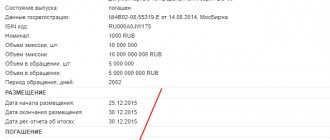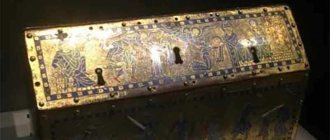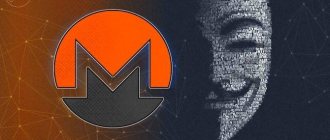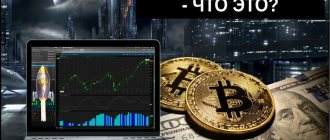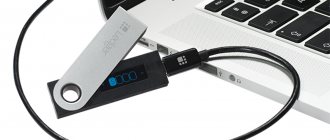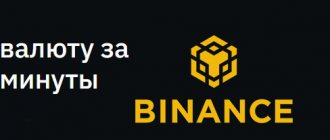The Internet of Things (IoT) is a network of physical objects equipped with sensors, software and other technologies. Connected to the Internet, these “things” can exchange data in real time with other connected devices and systems over the network. These connected devices are combined with automated systems to collect IoT data that can be analyzed to help solve problems or learn how to improve a process.
Some people argue that just because an object can connect to the Internet and exchange data doesn't necessarily mean it should. However, despite this, more and more objects are joining the Internet of Things to provide information, improve industrial application efficiency, save time and emissions, and improve the delivery of services to the public.
Despite the many positive aspects of the Internet of Things, there are also concerns about the privacy and security of data sets, IP addresses, and more. Industry and governments are working to address these challenges by developing international IoT standards.
How does the Internet of Things work?
The Internet of Things is made possible by the development and integration of a range of technologies, real-time analytics, sensors, embedded systems, wireless systems, automation, control systems and machine learning.
The Internet of Things works through devices and objects with embedded sensors that connect to the Internet and communicate with a platform that applies analytics and shares information with applications designed to meet specific needs.
IoT platforms are designed to determine which data is used and which can be discarded to identify patterns, make recommendations, and find problems, often before they occur.
All of this allows processes to become more efficient and also allows certain tasks to be automated, especially those that are repetitive, time-consuming or dangerous. For example, if you're driving a car and see the check engine light come on, the connected car can check the sensor and contact other people in the car before sending the data to the manufacturer. The manufacturer can then offer a troubleshooting appointment at the nearest dealer and ensure that the required parts are in stock and ready when you arrive.
Statistics
The IoT industry is growing steadily: the number of IoT devices is already greater than the world’s population – 14 billion versus 8 billion. By 2030, an increase of up to 30 billion smart devices is expected. This is due to the low price of sensors, available cloud technologies and advances in machine learning. Will weak artificial intelligence become strong through a quantitative-qualitative transition? Hardly. For this, quantum computers with a different operating logic will be needed.
Graph of the number of IoT devices (orange column) and conventional gadgets depending on the year of release with a forecast until 2025. Source
History of the Internet of Things
Here are some historical facts about the Internet of Things.
Who invented the Internet of Things?
The idea of a network of smart devices was first discussed in 1982, when a modified Coca-Cola vending machine at Carnegie Mellon University became the first device connected to the Internet. This machine could report its inventory and whether recently loaded drinks were cold or not.
However, it was Mark Weiser's 1991 paper The 21st Century Computer, as well as work at places like UbiComp and PerCom, that shaped the modern vision of the Internet of Things.
This vision was expanded in the 1990s before the term "Internet of Things" was coined in 1999 by Kevin Ashton, who worked at Procter and Gamble and the MIT Center for Automatic Identification. Although Ashton actually preferred the term "Internet of Things", he believed that radio frequency identification (RFID) was necessary for the Internet of Things to allow computers to control every device or object.
Although the IoT was not fully realized until around 2008–2009 (see below), it can be argued that it was conceived by Weiser and Ashton based on past work such as the Coca-Cola vending machine, even if they did not completely "invent" it .
When was it created?
As mentioned above, the Internet of Things was created based on a number of earlier developments and advances. Although the Carnegie Mellon University vending machine was installed in 1982, this cannot be called the beginning of the Internet of Things in general.
The concept of IoT was created in 1991 and further developed during the 1990s when Reza Rajhi described the concept at IEEE Spectrum in 1994. Several companies offered IoT-style solutions between 1993 and 1997 before Bill Joy introduced device-to-device communications as part of his vision at the World Economic Forum in Davos in 1999.
The actual term "Internet of Things" was coined by Kevin Ashton in 1999, although the time when objects were directly connected to the Internet actually began between 2008 and 2009.
Balena IoT Platform
The balena platform offers a wide range of tools for creating, deploying and managing IoT applications on your device. This IoT development platform is designed for use on Linux-based devices such as the Raspberry Pi or Nvidia Jetson TX2. The device is natively equipped with balenaOS, a Docker-compatible container, and a Yocto Linux-based host device operating system. This way, you get the flexibility to choose your own programming environment, but you also have to code the functions yourself.
To manage your devices, balena provides a dashboard to monitor and interact with them. You can SSH into the host device's OS or running services through their web terminal. All these tools revolve around balenaCloud, which is the main platform here.
Application of Internet of Things
IoT technology is used in a wide range of applications, from home uses such as home security, thermostats and lighting, to industrial uses for manufacturing, security, etc. These various applications can be broadly categorized into commercial, consumer, industrial and infrastructure.
Here are some common uses of IoT technology:
Consumer Applications
There is a wide range of consumer IoT applications, including connected vehicles, connected healthcare, home automation (such as lighting and sound systems), wearable technology and devices, including remote monitoring capabilities such as remote video doorbells. Many of them are also part of a smart home.
Smart home application
Lighting, heating and air conditioning, as well as media and security systems are all part of an IoT-enabled home. This can provide energy savings by turning off unnecessary devices. Many smart homes are based on a central platform or hub that connects to smart devices and appliances. They are usually controlled from a smartphone, tablet or other device, sometimes without the use of a Wi-Fi bridge. These systems can be linked to standalone platforms such as Amazon Echo or Apple HomePod, or use an open source ecosystem such as Home Assistant or OpenHAB.
Use in caring for the elderly and disabled
Internet-connected devices can also provide invaluable assistance to older or disabled people, providing a better quality of life. For example, voice-activated devices can help users with vision or mobility limitations, and public address systems can be directly connected to cochlear implants for users with hearing impairments. The sensors can also monitor medical emergencies such as falls.
Application in medicine and healthcare
The Internet of Things can be used for a variety of medical purposes, including data collection and analysis for research and patient monitoring. When used in such settings, IoT is referred to as the “Internet of Medical Things (IoMT).”
IoMT, also known as smart healthcare, integrates resources and services to create a digital healthcare system capable of health monitoring and emergency alert systems, including blood pressure and heart rate monitors, pacemakers and advanced hearing aids. Additionally, some hospitals have installed “smart beds” that can detect whether they are occupied or whether a patient is trying to get up. These beds can also be adjusted to provide the correct pressure and support to the patient.
On a smaller scale, advances in electronics manufacturing mean that low-cost, disposable and portable IoMT sensors can be placed on paper or fabric to provide point-of-care medical diagnostics.
IoMT can also be used to manage, control or prevent chronic diseases through remote monitoring. The use of wireless solutions allows healthcare practitioners to collect patient data and apply algorithms to analyze health data.
Other healthcare applications include consumer devices designed to encourage healthier lifestyles, such as connected scales or fitness monitors.
Beyond healthcare providers, IoMT is now also being used in the health insurance industry, including sensor solutions such as wearables, connected health devices, and mobile apps to track customer behavior and enable more accurate underwriting and pricing models.
Transport applications
IoT has many applications in the field of transportation, such as vehicle-to-vehicle and vehicle-to-vehicle communication, intelligent traffic management, smart parking, toll collection, logistics, fleet management, vehicle monitoring, security and roadside assistance. By connecting vehicles with transportation infrastructure, IoT can also enable vehicle-to-everything (V2X), vehicle-to-vehicle (V2V) communication, vehicle-to-infrastructure (V2I) communication, and vehicle-to-pedestrian (V2P) communication. These IoT communication systems are paving the way for autonomous driving and connected road infrastructures.
Application in construction
IoT devices can monitor and control different types of buildings, including mechanical, electrical and electronic systems. Integrating the Internet with buildings creates smart buildings that can help reduce energy consumption and monitor occupant behavior.
Industrial Application
Industrial Internet of Things (IIoT) devices enable the collection and analysis of data from equipment, technologies and locations. IIoT also allows assets to be automatically updated to maintain efficiency and prevent wasted time and money on repairs and other situations.
Industrial Applications
The Internet of Things can connect manufacturing devices to provide networked monitoring and control to enable smart manufacturing processes. These systems allow you to optimize products, processes and supply chains, and respond to product needs. IoT can help improve safety and reliability through predictive maintenance, statistical assessment and measurements to ensure maximum reliability.
Application in agriculture
Applications of IoT in agriculture include collecting data on weather conditions, soil composition or pest infestation. Data can help automate farming practices, inform decisions, improve safety, reduce waste and increase efficiency. The use of artificial intelligence and specialized computer programs can improve everything from soil management to fish farming.
Infrastructure Applications
The Internet of Things can be used to monitor and manage resilient urban and rural infrastructure, including bridges, railways or wind farms. By maintaining assets and minimizing risk, data collection can allow you to monitor structural conditions to improve safety and productivity, save costs, reduce time and more. Real-time analytics can help plan repairs and maintenance.
Application in city management
Entire cities can be controlled using the Internet of Things to create a smart city that offers a range of benefits to residents. These benefits include everything from parking space, environmental monitoring, traffic management, pollution mitigation, security systems, lighting, digital signage, public Wi-Fi, paperless ticketing, waterway management, smart bus stops, smart kiosks etc.
Application for energy management
Internet connectivity can provide energy management for lamps, home appliances, industrial facilities and more. Energy-consuming devices can be controlled remotely to save energy when they are not needed. As an additional application, a smart grid can collect energy usage data to improve efficiency and power distribution.
Application in environmental monitoring
Monitoring air or water quality is another way IoT-enabled sensors can change our world. The Internet of Things allows you to collect data on the movements of wild animals, soil conditions and much more. The Internet of Things can also monitor natural disasters such as tsunamis or earthquakes, helping to optimize emergency response and limit damage. It also includes the Ocean of Things project, which collects, monitors and analyzes the environment and activities of ships at sea.
Military applications
The application of IoT technologies for military purposes has led to the creation of the Internet of Military Things (IoMT). Applications in this field include reconnaissance, surveillance, and more to deliver battlefield data. This could include the use of sensors, munitions, vehicles, robots and wearable technologies to create a unified and effective military.
Why is the Internet of Things important?
The Internet of Things is already helping to automate and simplify many everyday tasks for businesses, industries, and homes. By reducing costs, increasing productivity and security, improving the customer experience, and generating new revenue streams, the Internet of Things can help us make more informed decisions.
On the business side, IoT provides several important benefits, including the ability to access and analyze data, eliminating the need for external data analysts or market researchers. The Internet of Things can handle big data analytics in real time, demonstrating how products and services work in the real world and creating a situation where improvements can be made quickly. This data also provides insight into customer behavior so businesses can meet their needs while also reducing operating costs by managing energy and resource use. Finally, IoT can enable remote work by collating and sharing data with employees no matter where they are located.
Who owns the data?
Data is central to the Internet of Things, but who owns it? The answer is that no one owns the data, although the actual data collection may be owned by an individual or company. Understanding who may be using such data is important, although in reality multiple organizations may be collecting the data, including application developers, database designers, or hardware manufacturers.
Database rights determine who can use the data and control how the data is stored and processed. Database rights depend on three criteria:
Database Definition
The database must be defined and collected in an organized manner to make it searchable. However, for most IoT-related real-time data, data collection in a database is unlikely.
Data collection
Claiming a database requires investment in collecting, validating, and presenting data sets. As connected devices bring together big data, collecting and organizing data is an important part of defining rights.
Economic and business connections
In Europe, for example, database owners must have economic and business ties to an EEA state in order to obtain relevant database rights.
When these criteria are met, the database owner typically takes the initiative and assumes the associated risks to obtain, verify, and present the data. Exceptions may be where the data collection is carried out by a subcontractor on behalf of another organization.
Database rights can also be specified in the contract, which can help prevent subsequent ownership disputes.
Toit IoT Platform
Toit was founded in 2022 by a team of developers who created V8 for Chrome at Google, with the intention of creating universal firmware for IoT devices to replace the traditional development process. They offer a whole new set of features and even a new Python-like programming language designed exclusively for the Internet of Things. The Toit language is a high-level object-oriented language with a simple, easy-to-use Python-like syntax that is 20 times faster than MicroPython.
With Toit, the $2 ESP32 microcontroller makes the most of its capabilities for true multitasking. By separating the firmware and application code, Toit allows you to deploy multiple applications on a single device in a much easier and more flexible process. This way, you can easily try out new things without the risk of breaking your device.
Is the data safe and where is it stored?
Security is a real concern for the Internet of Things, as software flaws leave data sets and systems vulnerable. Hackers can directly attack smart devices due to the lack of security many of them have.
Webcams are a good example of devices with poor security measures, leaving them open to hackers. Governments are trying to address these issues with guidelines for IoT devices, recommending encryption, password protection, and regular security updates.
Security concerns will continue to grow as the IoT device market grows, with industry concerns raised. Industrial espionage or malicious hacking of critical infrastructure are very real risks.
These risks are obvious when applied to real-world consequences, such as someone being able to remotely take control of a driverless car.
Examples of IoT devices
IoT devices come in a variety of types for applications spanning home use, industrial processes, manufacturing, and more. With billions of different devices connected to the Internet of Things around the world, there are too many to cover. However, here are some common examples:
- Autonomous agricultural machinery
- Biometrics
- Connected technology
- Cyber Security Scanners
- Health monitoring
- Home security systems
- Logistics tracking
- Smart Factory Equipment
- Ultra-fast wireless Internet
- Wireless inventory tracking
Historical context
Until the early 2000s, getting onto the Internet was problematic: you needed either a cable or a good antenna for Wi-Fi. Therefore, either servers (which served this Internet) or computers with laptops accessed the Internet.
But very soon miniature radio communication modules appeared that could be installed in compact phones, computers, and then in more and more equipment.
For example, here is a modern line of wireless modules of the ESP family: they can be bought at any radio equipment store and used in amateur projects. And by modern standards they are considered huge: the wireless module in your phone is much smaller.
